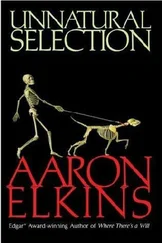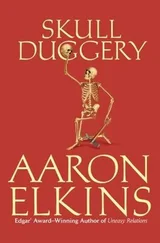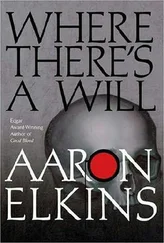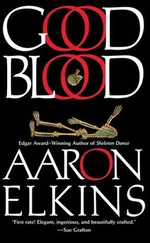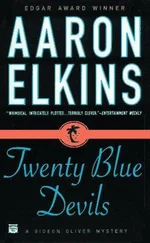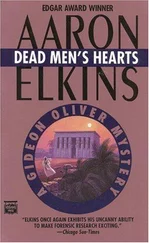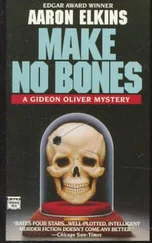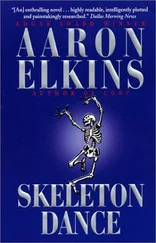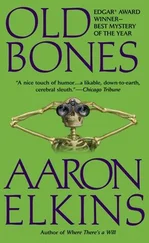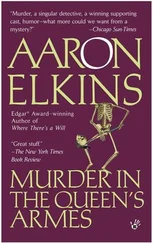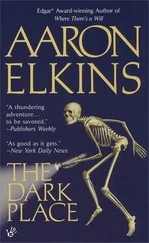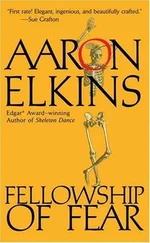“No, no,” Quadrelli said excitedly. “Climb up the cliff? Pietro was not a climber of cliffs. Why would he do such a thing? No, no.”
“That’s the question, Severo,” Gideon told him. “It’s one of the things that makes the whole scenario suspect.”
And of course there were questions to be answered about how it was possible to tell such things from skeletons, and about how confident he was in his findings. But it was clear that he’d made an impression.
“So what happens now?” Nico asked. “Do the Carabinieri get back to work on it?”
“They’re thinking about it.”
“Well, do they have any suspects?”
“Nobody serious, as far as I know.” Just you three and Cesare, to start with. And maybe an unknown lover.
“Gideon,” Franco said, “we very much appreciate all that you’ve done. If there’s any way we can thank you . . . a fee—”
Gideon held up his hands. “I didn’t do anything. I’m just glad I was able to help a little. I wish I could do more.”
“Well, actually, I have a thought, Gideon,” Luca said. “You got some pretty amazing clues just from looking at babbo’s autopsy report. Would there be anything more to learn if you examined his actual remains? I know I’d certainly be willing to authorize an exhumation.”
Franco wasted no time correcting him. “I believe that such authorization would have to come from me, Luca. That’s correct, isn’t it, Severo?”
Before Severo could answer Luca bowed his head Indian style, fingers steepled at his forehead. “I crave forgiveness, elder brother.”
Franco smiled skeletally.
It had taken until now for Gideon to process what they were talking about. “Wait a minute, do you mean your father’s remains are still there? He wasn’t cremated?”
Franco stared at him. “Where’d you get that idea?”
“I . . . I’m not sure . . .”
“That’s what Rocco thought,” John said. “He mentioned it in class.”
“Well, he was wrong,” Nico said. “Jesus, babbo’ d never let us get away with cremating him. Are you kidding me?” He made the wrist-wobbling gesture that Italians use where Americans might say, “No way.”
“But Nola was, wasn’t she?” Gideon asked. “The mortician, Cippollini, said it was set for yesterday.”
Franco’s mouth turned down. “That’s Cesare’s doing. She would have preferred otherwise, I’m sure, but it wasn’t up to us.”
“Well, could I see your father’s remains? Would you object? Would you be willing to authorize it, Franco?”
Franco didn’t look happy about it. “I don’t like to do it, to disturb his bones.”
“Get real, Franco,” Luca said. “We’re trying to clear his name here. I don’t think he’d mind having his bones poked at if it would help.”
“Well, what exactly would you be looking for, Gideon?” Franco was unconvinced.
“I don’t really know. It’s impossible to say. Anything I can find that might be pertinent.”
Franco shook his head. “I really don’t . . .”
“Oh, Franco, for Christ’s sake—” Luca began.
“Yes, yes, but you know, these things take time. I’m not sure it can be arranged before you leave, Gideon.”
“It will take no time at all,” Quadrelli said, joining in on the pressure on Franco. “Pietro is no’ buried, they no’ need picks and shovels. They are in a vault in the crypt. To turn a key and open the door is all that is necessary. I will call signor Cippollini myself.”
Franco reluctantly gave in. “You would treat them with respect, Gideon?”
“Of course.”
“Very well. Call signor Cippollini, Severo. Tell him he has my permission.”
“If you could do that right now, I’d appreciate it,” Gideon said. “As Franco said, we’ll only be here another couple of days.”
Quadrelli promptly hauled out his phone. He spoke in rapid Italian, nodding at Gideon and making a circle with his thumb and forefinger at one point to indicate it was a go. He hung up, pleased with himself.
“Ten o’clock tomorrow morning. He will have the remains ready for you. But he makes a request. He says please not to bring this time the entire police force with you.”
FOURTEEN
WITHno memorial service under way at Onoranze Funebri Cippollini, Gideon and John were not required to go around to the back door this time. Signor Cippollini, wearing what seemed to be the same tightly fitting black suit and pretty much the same hassled demeanor, distractedly ushered them in through the front entrance, took them through the church-like chapel with its faux stained-glass Gothic windows, and into the strangely cheery, brightly colored workroom. On a flatbed, wheeled table lay something quite different from Nola’s child-size cardboard box. Pietro’s casket was the full-size item and made for the long haul, rather than for a single incendiary appearance. Constructed of ebony or something like it, it was elegantly traditional in style, with ornate brass handles and carrying rods, an arched, carved lid, and, on the side, a plastic-coated black-and-white studio photograph of Pietro as a young man, along with his name— Pietro Vittorio Teodoro Guglielmo Cubbiddu— and dates— 1953–2011 —incised in flowing gilt script. It all was clean and gleaming, as if it had gotten a coat of furniture oil that morning, which it probably had.
Cippollini himself unlocked and opened the coffin’s upper panel—the lid was in two parts, Dutch-door style, as if in preparation for an open-casket display—which Gideon very much doubted had taken place. The broken, gaping, lichen-blackened skull was nothing the mourners would have cared to look at, but it was reverently placed, face up, at the center of an immaculate, satin pillow. The rest of the bones were neatly hidden beneath a padded white coverlet, equally spotless. Cippollini stood admiringly before his creation for a few seconds, then opened the lower lid as well, and, with a bullfighter’s flourish, removed the coverlet to reveal the earthly remains of Pietro Vittorio Teodoro Guglielmo Cubbiddu in their totality.
Their condition came as something of a surprise. Dr. Bosco’s report had listed the trauma, all right, but when he’d written “multiple fractures,” Gideon had taken him to mean that the skeleton as a whole had suffered many breaks, not that each named bone was broken into separate pieces . But unlike Nola’s bones, which were cracked and splintered but mostly in one piece, these were shattered . The most cursory of glances showed him three pieces of the left scapula alone.
That got him thinking. Why the difference? Two bodies undergoing exactly the same terrible fall and impacting on the very same rocky scree—why should the injuries to their bones look so different? Could they be the results of “taphonomic” changes—natural postmortem changes that had occurred as a result of lying out in the open for almost an entire year? No, they’d lain right up against each other and endured exactly the same weather conditions and animal depredations for exactly the same length of time. He could come up with only one answer, but it seemed too bizarre to . . . He tucked the question away for later, when he had time for solitary cogitation.
Despite his trade, it was clear that Mr. Cippollini had little knowledge of skeletal anatomy. Either that, or his penchant for symmetry outweighed his care for anatomical precision. The bones of the legs and pelvis, which were among the few that were unbroken, were in place (although he’d gotten the left and right tibias and fibulas confused), but just about everything from the hips up was arranged strictly for show. “Matching” pieces of scapula and ribs were placed on either side with no regard for what had gone where in the living body. The “spinal column” consisted of vertebrae, whole and in chunks, that tapered beautifully down from skull to pelvis—in complete defiance of nature’s way. At their bottom, between the hipbones, was the broken sacrum, misarranged, but at least in the right general area.
Читать дальше

